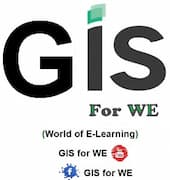An overview of the Space Time Pattern Mining toolbox
(ArcGIS, ArcToolbox) Tools
· The Space Time
Pattern Mining toolbox contains statistical tools for analyzing data
distributions and patterns in the context of both space and time. It includes a
toolset that can be helpful for visualizing the data stored in the space-time
netCDF cube in both 2D and 3D and filling missing values in your data prior to
cube creation.
· Create Space Time Cube By Aggregating Points takes point datasets and builds a multidimensional cube data structure (netCDF) for analysis. Emerging Hot Spot Analysis then takes the cube as input and identifies statistically significant hot and cold spot trends over time.
You might use the Emerging Hot Spot Analysis tool to analyze crime or disease outbreak data in order to locate new, intensifying, persistent, or sporadic hot spot patterns at different time-step intervals. The Local Outlier Analysis tool takes the cube as input to identify statistically significant clusters of high or low values as well as outliers that have values that are statistically different than their neighbors in space and time.
The Utilities toolset enables you to visualize the data and analysis results stored in the space-time cube in two and three dimensions. These visualization tools can be used to understand the structure of the cube,
how
the cube aggregation process works, and to visualize the analytical results added to the cube by other Space Time Pattern Mining tools. See Visualizing the
Space Time Cube for strategies to allow you to look at cube contents.
· Toolset of the Space Time Pattern Mining toolbox:
1. Utilities
toolset
This toolset contains tools for visualizing the variables stored in a
netCDF cube.
· Tools of the Space Time Pattern Mining toolbox:
1. Create
Space Time Cube By Aggregating Points
Summarizes a set of points into a netCDF data structure by aggregating
them into space-time bins. Within each bin, the points are counted and
specified attributes are aggregated. For all bin locations, the trend for counts and over time and summarized attributes are evaluated.
2. Emerging
Hot Spot Analysis
Identifies trends in the clustering of point counts or attributes in a
netCDF space-time cube. Categories include new, consecutive, intensifying,
persistent, diminishing, sporadic, oscillating and historical hot and cold
spots.
3. Local
Outlier Analysis
Identifies statistically significant clusters of high or low values as
well as outliers that have values that are statistically different than their
neighbors in space and time.
Thank You
اليك صفحه ومجموعة على الفيس بوك لتعلم أكثر بما يخص نظم المعلومات الجغرافية (GIS) و برنامج ArcGIS Pro من خلال هذه الروابط:




تعليقات
إرسال تعليق